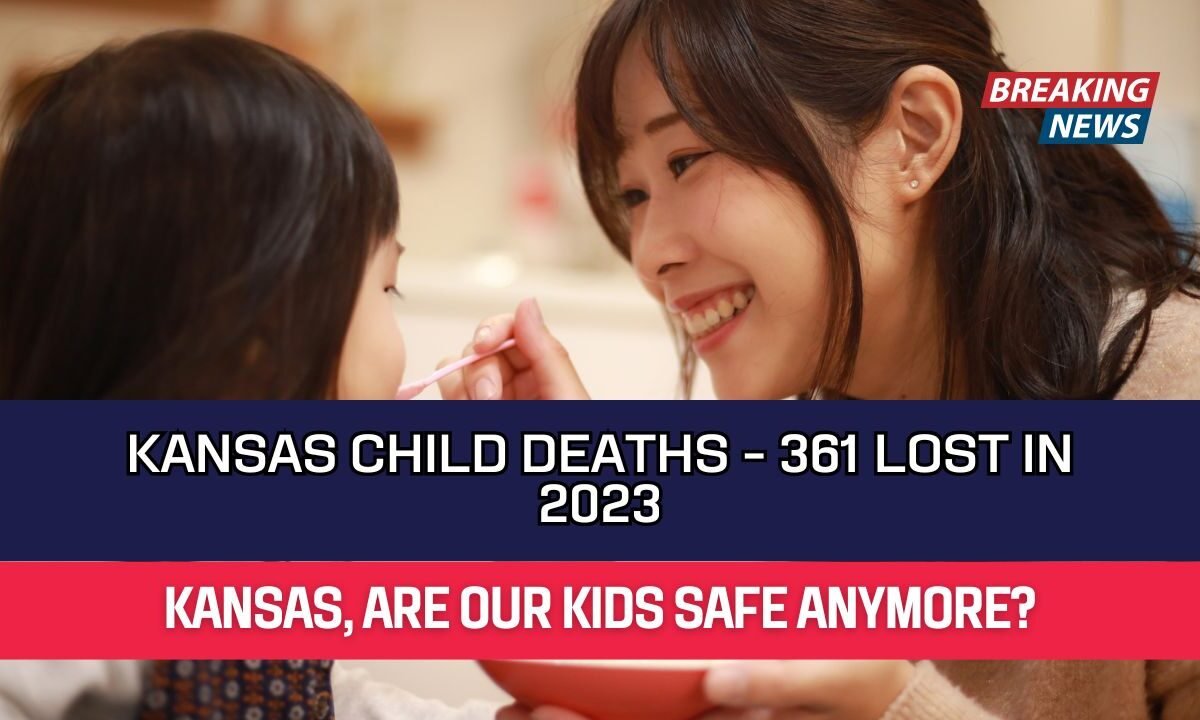Every child deserves a safe home and loving care, but new data from the Kansas State Child Death Review Board paints a heartbreaking picture.
According to the latest report, 361 Kansas children lost their lives in 2023 — many due to unsafe sleep situations, violent homes, or exposure to dangerous drugs.
Even though the overall child death rate dropped slightly, Kansas still remains above the national average, and experts warn that most of these deaths could have been prevented.
The Main Causes of Child Deaths
The report highlights several major factors behind these tragic numbers. Among them, unsafe sleep environments and drug exposure stand out as the most serious threats.
Unsafe sleep remains a leading cause of infant deaths. In 2023, 37 infants in Kansas died from sleep-related causes. Only 23 percent were placed in a crib or bassinet, and more than half were found sharing a bed or sleeping surface.
Nearly 96 percent of these deaths involved at least one unsafe sleep factor, such as soft bedding, blankets, or co-sleeping.
Substance use is another growing concern. Among 180 vehicle crash deaths where toxicology tests were performed, 29 percent of minor drivers and 14 percent of child passengers tested positive for alcohol or illegal substances.
In 47 percent of the cases where a child died as a passenger, the driver tested positive for drugs or alcohol — with marijuana being the most common.
Between 2019 and 2023, 65 Kansas children died from drug overdoses. Fentanyl has become the most dangerous substance, responsible for 48 deaths between 2020 and 2023, compared to none just a few years earlier.
Marijuana remains the most frequently detected drug, and in 2023, 23 percent of children tested positive for it at the time of death.
Child Welfare and Family Issues
The report also shows a strong link between child deaths and families that had previous contact with the Department for Children and Families (DCF).
Between 2019 and 2023, 37 percent — or 677 — of the 1,824 children who died had past involvement with DCF. Half of these cases involved parental substance abuse, and 111 children had open child protective service cases at the time of death.
Officials stress the need for better teamwork between hospitals, child-protection workers, and law enforcement before releasing newborns into homes with risk factors such as addiction or violence.
Summary of Key Findings
| Category | Number or Percentage |
|---|---|
| Total child deaths in 2023 | 361 |
| Sleep-related infant deaths | 37 |
| Unsafe sleep factors | 96% |
| Children with DCF involvement | 37% (677 of 1,824) |
| Drug overdose deaths (2019–2023) | 65 |
| Fentanyl deaths (2020–2023) | 48 |
| Children testing positive for marijuana | 23% |
Policy Recommendations
The board recommends stronger laws to protect children and hold adults accountable. Their key proposals include:
- Expanding the definition of “violent offender” to include those convicted of child abuse.
- Requiring all home-based childcare providers to be licensed, with stricter penalties for unlicensed operations.
- Making it mandatory for doctors to report medically impaired drivers.
- Banning retail sales and possession of THC and Kratom products.
- Improving child-welfare investigation oversight under “Adrian’s Law.”
Racial Disparities in Child Deaths
The report also revealed serious racial inequalities. Black children in Kansas had a death rate more than double the state average. Hispanic and multiracial children also faced higher mortality risks, pointing to deeper social and economic issues that need attention.
Moving Forward
In 2023, Kansas recorded a child death rate of 52 per 100,000 children. That’s slightly lower than the 56.3 rate in 2022 but still higher than the national average of 49.8.
Executive Director Sara Hortenstine said that data like this helps guide prevention and education programs, adding that stronger policies can reduce the number of families who suffer the loss of a child.
This report is a painful reminder that many child deaths in Kansas could have been avoided. From unsafe sleep and drug exposure to family neglect and weak enforcement of child-protection laws, the state faces serious challenges.
However, these tragedies also highlight clear opportunities for change. By improving parental education, enforcing childcare standards, and strengthening social support systems, Kansas can protect its most vulnerable citizens.
Every child deserves safety, care, and a chance to grow up healthy — and that must remain the state’s top priority.




